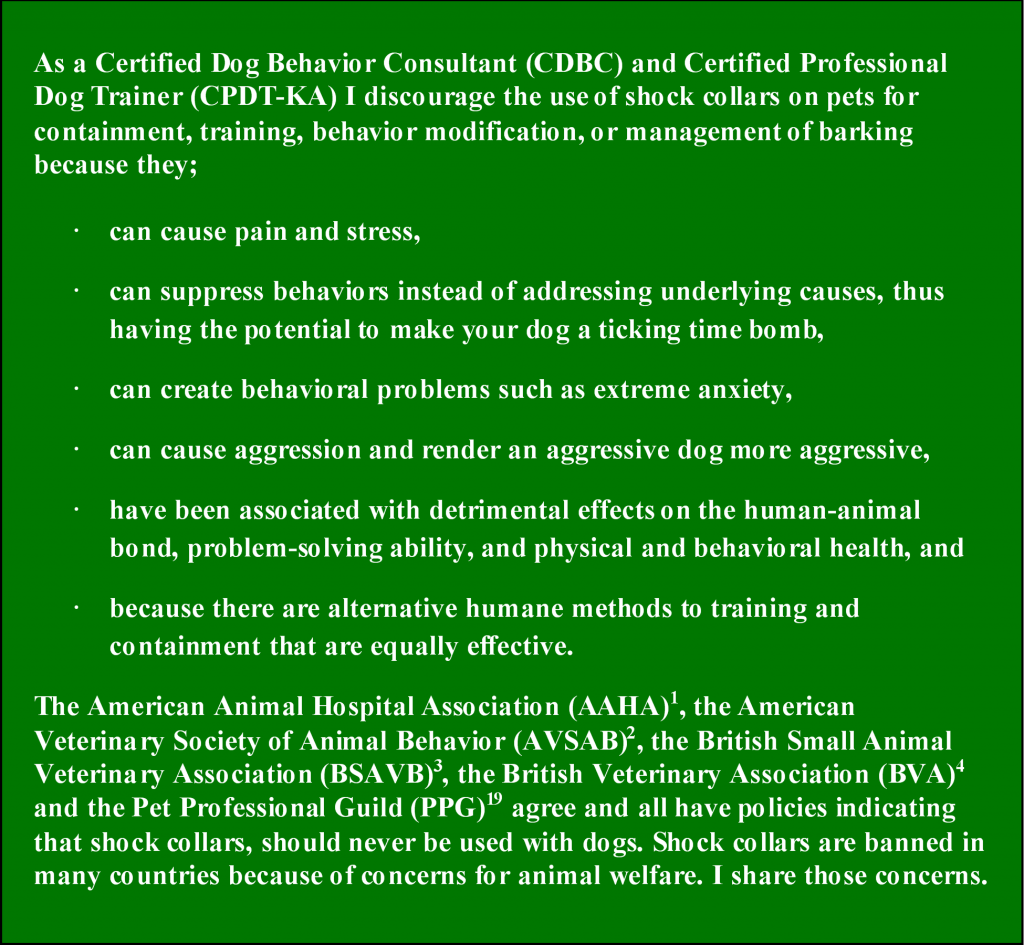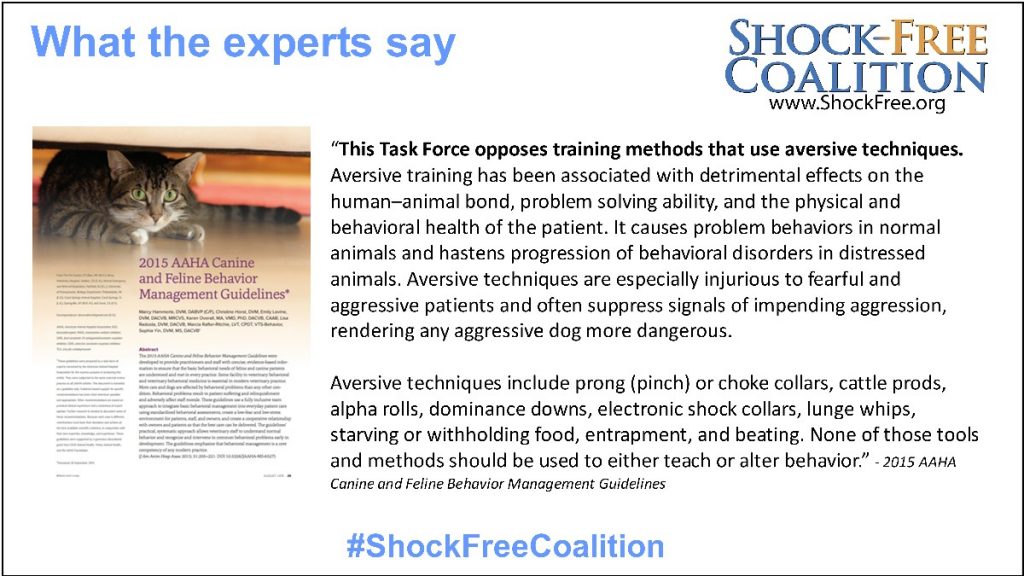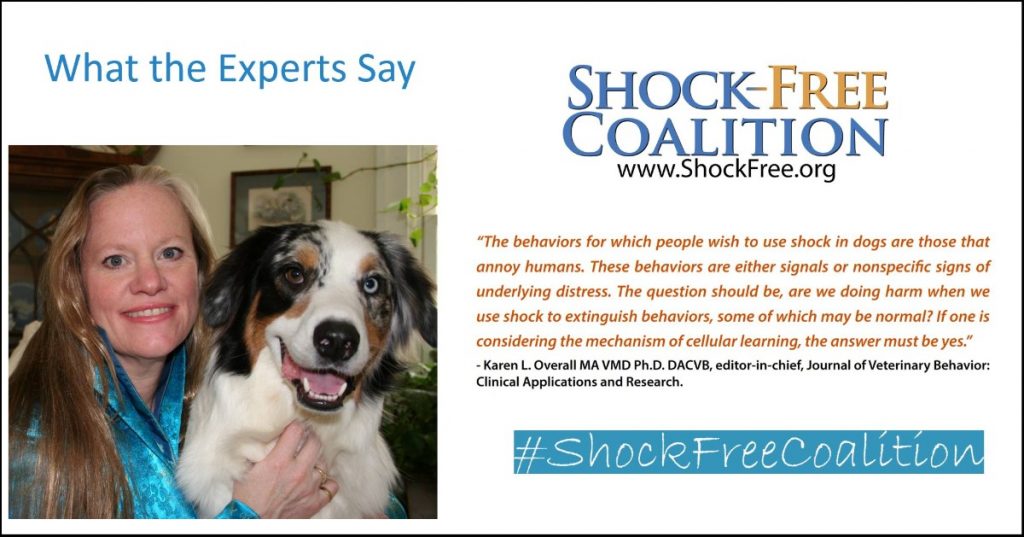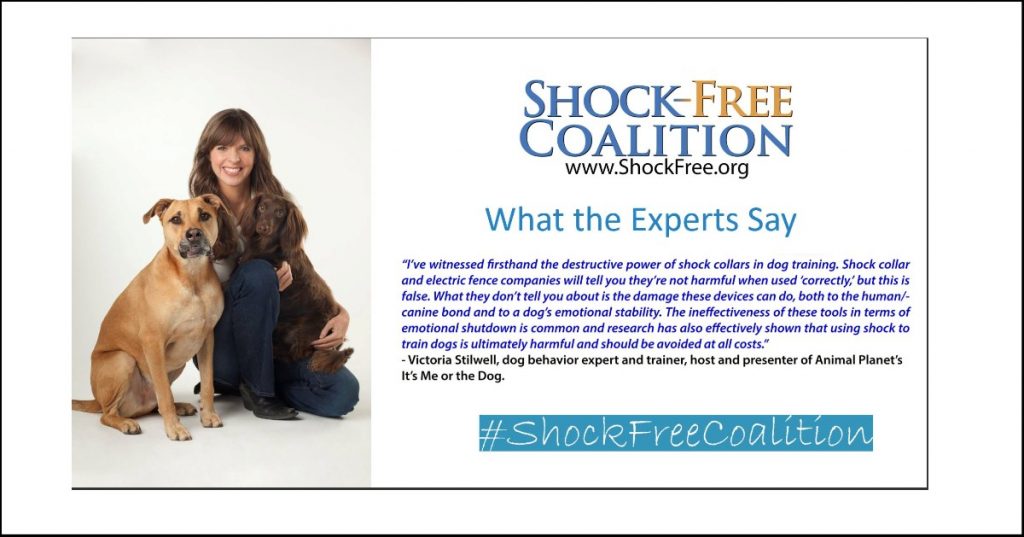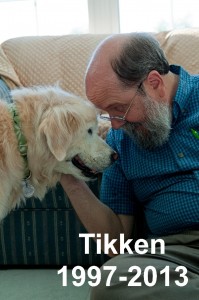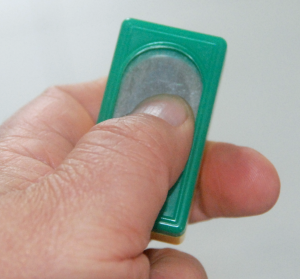< UPDATED – 3SEP17 >
You can listen to two podcasts on this topic by clicking on the links below.
<Finding the Right Dog for You and Your Family – Part 1>
<Finding the Right Dog for You and Your Family – Part 2>
 I love dogs. That is one of the reasons why my wife and I decided to get into the pet care business over 21 years ago. Nothing makes me feel better than seeing a family get a new dog and watching them bond and grow old together. However, that does not happen automatically. Dogs can make wonderful companions, but
I love dogs. That is one of the reasons why my wife and I decided to get into the pet care business over 21 years ago. Nothing makes me feel better than seeing a family get a new dog and watching them bond and grow old together. However, that does not happen automatically. Dogs can make wonderful companions, but  not every dog is the right dog for every person or family. Finding the right fit takes time and work, something that does not happen when you get a dog or puppy on impulse. The odds are your dog will be with you longer than you have your car. It is worth taking the time to do it right.
not every dog is the right dog for every person or family. Finding the right fit takes time and work, something that does not happen when you get a dog or puppy on impulse. The odds are your dog will be with you longer than you have your car. It is worth taking the time to do it right.
In my business, I see thousands of dogs every year, and I know that some of them, as happy as their family is with them, would not be the right dog for me. Sadly I also see some dogs and families that are terrible mismatches; neither dog nor people are enjoying the relationship. That is why I like to sit down with people and help them learn how to find the right dog and the right source for a dog so that the dog and their family have a wonderful life-long relationship.
This article is something we provide to people when they come in for one of our FREE consultations. You are welcome to use it without the consultation, but I would encourage you to give us a call (945-6841) and set up an appointment. We think you will be glad you did.
Getting A Dog Is A Commitment
Getting a dog can easily be a 10 to 15-year commitment, so it is imperative that you pick the best breed or mixed breed for your family, and the best individual  dog. Selecting the right dog is an important decision and one you should research thoroughly before making a decision. Once you think you have decided on a breed/mixed breed, do lots of reading, talk to pet professionals such as veterinarians, trainers, kennel and daycare owners, and groomers as well as others about your choice. Make sure you ask for both the good and the bad points of a specific breed. No breed is the perfect dog for everybody. Consider the bias people may have when recommending a breed or individual dog. If they are trying to sell you a dog; which is what a breeder, pet store, or shelter/rescue is trying to do, then they may not be giving you sound, objective advice.
dog. Selecting the right dog is an important decision and one you should research thoroughly before making a decision. Once you think you have decided on a breed/mixed breed, do lots of reading, talk to pet professionals such as veterinarians, trainers, kennel and daycare owners, and groomers as well as others about your choice. Make sure you ask for both the good and the bad points of a specific breed. No breed is the perfect dog for everybody. Consider the bias people may have when recommending a breed or individual dog. If they are trying to sell you a dog; which is what a breeder, pet store, or shelter/rescue is trying to do, then they may not be giving you sound, objective advice.
Factors You Need To Consider BEFORE You Start Looking For A Dog
- Is anyone in your immediate family afraid of dogs? If so, you need to seriously ask yourself if getting a dog is a good idea. Living with a dog is not necessarily going to help the person afraid of dogs and may end up in your having to rehome the dog. That is not fair to the dog.
- Is anyone in your family allergic to dogs? If so, spend a significant time around dogs to determine if this will be a problem before you get the dog. Beware of claims by people trying to sell you that they claim is “hypoallergenic.” While some pets shed less and cause less of an allergic reaction than others; I do not believe any breed of pet is truly hypoallergenic. My wife and I are both allergic to dogs and cats, and we cannot imagine a life without pets; however, not everyone is willing or able to put up with allergies.
- If you live alone or are the dogs only caregiver, have you considered who will care for your dog if something happens to you? Hopefully, nothing will happen to you, but we do suggest that you have planned ahead of time just in case.
- Do all adult family members support the idea of getting a dog? Dogs are not for everyone. They are also very good at reading humans and knowing if someone wants them. We have seen more than one situation where the dog was not welcomed by the entire family, and that does not always change over time. I recommend that everyone be on board with the decision to get a dog.
- Will your dog be around children? I am not just asking about your children, but also the
 children belonging to your neighbors and other family members. Not all dogs will enjoy the company of children. You need to choose both the breed and the individual dog wisely to have the best probability of dogs and children living in harmony.
children belonging to your neighbors and other family members. Not all dogs will enjoy the company of children. You need to choose both the breed and the individual dog wisely to have the best probability of dogs and children living in harmony. - Will you take your dog to work with you or will they be around your business? Not all dogs enjoy other people and may, in fact, be a liability in your business. Selecting a dog with the right temperament will be very important.
- What time of year do you want to bring this new puppy or dog into your family? Depending on where you live and what you do for a living, there are times of the year that are better for getting a dog. The first few months with your new dog will most likely require a significant amount of your time, and you and the rest of the family may need to adjust some priorities, in particular with a Below are some factors to consider.
The end of year holidays – For most people, November and December are the two most hectic months of the year. Most of us celebrate three major holidays, we are invited to more gatherings than average, and children have a wide variety of holiday-related school events. Are you ready to miss some of those events due to a new dog or puppy in the family? A new puppy or a rescue dog, and the latter will most likely also have some behavioral baggage, will need lots of your time, as well as stability, and in many cases quiet. Can you and your family commit to that during the holidays? If not, waiting until January or spring may be a better option for you and your new canine companion.
Housetraining and the weather – if you live in the snow belt, you will need to take the puppy out several times per day for housetraining no matter how cold it is or how hard it is snowing (see http://blog.greenacreskennel.com/2014/02/16/housetraining/). Even though an older dog may be advertised as being housetrained, that is not always the case. Living in a state that can have harsh winters, I would not get a new dog between November or mid-March.
The summer holidays – Many people choose to get a new dog, especially a puppy, once the kids are out of school, especially if one of the parents also has the summer off. This can be a very good time to get a new dog, but can also be a recipe for creating a dog with separation issues when everyone disappears during the day come the end of August. If you get a dog during this time of year, make sure that you immediately start teaching them how to cope with being alone (see http://blog.greenacreskennel.com/2016/03/14/dog-training-preventing-separation-anxiety-teaching-your-dog-to-cope-with-being-alone/)
Family Vacation – This can be a nice time to get a dog if you are planning on staying home. However, if you are going away and traveling, I would postpone getting the dog until you return. The first few months with a dog are important for developing the bond between you and your new friend. If the dog is with you for two to four weeks and then you are gone for two weeks, you may need to spend some extra time rebuilding that bond. I cannot imagine taking a puppy or a rescue dog on vacation immediately after they join my family. As mentioned above, they need stability and consistency the first few months with us. That typically does not occur when you are traveling.
- Do you have other dogs in your family? Not all dogs will get along with other dogs. A puppy may be more than an eight-year-old dog wants to handle. They may grow to tolerate or even like each other but will require close supervision until they do.
- Do you have other pets in your family? Dogs and cats do not always get along (ask me about Batman and Tikken) and small rodents or chickens often may be very tempting to a dog. Remember your dog is a predator. Some breeds will do better than others around other animals but remember supervision and training will also be important.
- Why do you want to get a dog? What will be the dog’s role in your family? Do you want a companion to share your days? Do you want a dog that will be your teammate in dog sports? Do you want a dog that can be a Therapy Dog and bring joy to people in nursing homes? Do you want the dog to go hunting with you, or do you want one or more of these things or something else? Not all dogs will be well suited to all of these tasks and even if their breed suggests that they have a probability of doing well at something, say retrieving, that does not mean that will be the case. Are you ready to accept your dog for whomever they turn out to be?
- Who will be the dog’s primary caregiver in your family? If you want your children to take part in caring for the dog, that is fine, but please understand that based on 21 plus years of experience, I am confident that it will be an adult family member who will be providing most of the care for a dog. Children often drive a family’s decision to get a dog, and when I meet with a family for a consultation, I always ask about the children’s extracurricular activities. Today it is not uncommon for a child to be involved in several afterschool activities every week. If your children want a dog, I encourage you to ask them what activities they are willing to give up so that they have time for the dog. If they say they want a dog but are not willing to give up any other activity, it may not be the right time to add a dog to your family.
- Do you want a puppy, an adolescent or an older dog? Dogs of any age can become great family members, but there are pros and cons at every age level.
 The first twelve months of a puppy’s life can keep you quite busy; however, by knowing the breeder and the dog’s parents and having control over their early learning and development, I believe that you have a greater probability of getting what you want when you choose to get a puppy. However, that does depend on you putting in the time and energy to manage and train the dog.
The first twelve months of a puppy’s life can keep you quite busy; however, by knowing the breeder and the dog’s parents and having control over their early learning and development, I believe that you have a greater probability of getting what you want when you choose to get a puppy. However, that does depend on you putting in the time and energy to manage and train the dog.
Adolescents, typically the dogs between six months and three years of age often end up being rehomed because of behavior problems. These problems are often the result of inadequate or no socialization and little or no training or inappropriate training. These dogs can become wonderful companions, but you need to be patient and be willing to invest time and love in training and rehabilitating these dogs. Theses dog can be a great deal of work so carefully assess if you have the resources to give them what they need. Loving a dog is seldom enough.
Older dogs, those five and up, often end up in a shelter or rescue due to  financial reasons or other family life changes. If the dog has only had one prior family and lived in the house as a companion, they could be a perfect dog for you. Often these dogs have had a basic level of manners training, are housetrained, and are just looking for a home where they can live out their years, getting affection and giving it back. Shed, was adopted when she was five and fit in our family very easily.
financial reasons or other family life changes. If the dog has only had one prior family and lived in the house as a companion, they could be a perfect dog for you. Often these dogs have had a basic level of manners training, are housetrained, and are just looking for a home where they can live out their years, getting affection and giving it back. Shed, was adopted when she was five and fit in our family very easily.
- Do you want a pure breed, a mutt or a designer breed? Selecting the type or breed of dog to get may be one of the most complicated decisions you will make and also the one with a significant amount of emotional content.
- Pure Breed – You are NOT a bad person if you choose to get a purebred puppy from a reputable breeder. I would rather have you get the dog you
 want than get a dog from a rescue because you have been told that is the “right” thing to do. Paula and I have had both purebreds from breeders and mixed breeds and purebred dogs from rescues. They can all be good However, I have also helped many clients who had a bad experience with a rescue; both with pure breds and mixed breeds, who have since had great experiences by getting the dog they want, not the one friends or family told they must get. Get the dog that you believe will be the best fit for you and your family and do not be swayed by emotion.
want than get a dog from a rescue because you have been told that is the “right” thing to do. Paula and I have had both purebreds from breeders and mixed breeds and purebred dogs from rescues. They can all be good However, I have also helped many clients who had a bad experience with a rescue; both with pure breds and mixed breeds, who have since had great experiences by getting the dog they want, not the one friends or family told they must get. Get the dog that you believe will be the best fit for you and your family and do not be swayed by emotion.
- Pure Breed – You are NOT a bad person if you choose to get a purebred puppy from a reputable breeder. I would rather have you get the dog you
If you do choose a pure bred, make sure you thoroughly understand the genetic health issues that they may face as well as some of the human-made features that can affect a dog’s health. Dog breeding is probably one of the longest running examples of genetic engineering, and it has not always ended up benefitting the dog. Due to breeding for certain facial structures, some dogs will be breathing impaired their entire life. Other breeds cannot even breed or deliver puppies naturally.
- Mutt/Mixed Breed – The loveable mutt, and yes they can often be quite lovable, is typically the result of an accidental breeding. How did that happen? Well, two

EPSON DSC picture people with dogs were not responsible enough to get their dogs spayed/neutered or to prevent them from breeding. Shed, that five-year-old I mentioned above, was a mixed breed and was delightful; however, it was quite evident from her behavior that she was well cared for and trained from an early age.
The problem with a mixed breed dog is that you never know what you are getting from both a physical and behavioral perspective. For example, let’s say you get a Bassett Hound/German Shepherd mix. These are two breeds with fundamentally different temperaments, and you may not know which will be the predominant personality until you have lived with the dog for a while. It may or may not be  the dog you had hoped to have.
the dog you had hoped to have.
Mixed breed puppies can be great if they are properly raised between birth and eight weeks of age but if the owner was not responsible enough to prevent the breeding the likelihood of doing everything else that is necessary for two months with a litter of puppies seems unlikely. Leaving the puppies in the barn with mom until they are eight weeks of age is a disaster waiting to happen.
For years it was presumed that mixed breeds would be healthier due to hybrid vigor. The latest research suggests that is not the case and in fact, mixed breeds are just as likely to have the same health issues as pure breed dogs.
Also, recognize that when a shelter labels a dog as being a certain mix of breeds they are often inaccurate. A recent study indicated that the determination of a dog’s mix of breeds by shelter workers or pet care professionals (veterinarians, trainers, and boarding kennel operators) were wrong 87.5% of the time when compared to DNA testing. The fact is, unless someone saw the actual act of conception, the odds of picking correctly are only 12.5%
- Designer Breed – The designer breeds (the Doodles, the various Poo’s, and others) are typically the deliberate breeding of two purebred dogs to create a “designer-breed” that is then often sold for much more than the typical purebred. As the designer breeds have become increasingly popular, breeding them strictly for monetary reasons has become more common; this has never been good for dogs. Some of these designer breeds can be great dogs, but they usually do not have all of the “benefits’ that they are advertised as having. For example; the Labradoodle and Goldendoodle are often promoted as being “non-shedding” or “hypoallergenic.” The Poodle does have a very different coat type from the Labrador or the Golden, but the coats of doodle puppies can vary wildly within the individuals in the same litter. To claim that they are all “non-shedding” or “hypoallergenic” is pure nonsense. As a potential purchaser of one of these dogs, it is also important to understand that very few reputable breeders of purebreds are going to knowingly sell one of their dogs to be used in a designer-breed breeding program. That means that it is possible that these designer-breeds are the offspring of lower quality breeding stock which can have a detrimental effect on both health and temperament. I am not saying never to get a designer-breed, but it is important to understand that when one breeds for physical characteristics, it also can affect temperament, and often in a negative way. This is a case where you will want to physically see both mom and dad and as many generations of this lineage as possible, before committing to a purchasing a puppy.
- What size dog do you want? – Dogs come in a wide variety of sizes; everything from a 4lbs Teacup Yorkie to a 200lbs+ English Mastiff. If you plan on a life of outdoor activity for you and your dog, especially if you will be hiking off the beaten path, I strongly encourage you to get a dog that you can physically carry from wherever you are to a vehicle. If your dog injures itself out in the middle of nowhere, you may have no other choice. If your physical abilities are limited or if you are just getting older, you need to ask yourself “can I carry my dog up and down the stairs or out to the car?” When our Golden Tikken passed at 16 years of age, my wife and I decided that we needed to “downsize” for our next dog. Tikken only weighed 50lbs, but the last year of her life we had to carry her up and down the stairs, which with bad backs was not always easy nor was it healthy. Our new dog, Muppy, weighs a lean twenty-five pounds.
 Size also play a role in other ways. Big dogs eat more which will affect your wallet, and they will also leave larger deposits for you to clean up in the yard. Caring for a large dog can also end up costing you more at the veterinarian and the groomer.
Size also play a role in other ways. Big dogs eat more which will affect your wallet, and they will also leave larger deposits for you to clean up in the yard. Caring for a large dog can also end up costing you more at the veterinarian and the groomer.
Within the specific breeds, there are those breeding for incredibly tiny or gigantic dogs. Often these dogs also have extremes in temperament and health issues. If the words “Teacup” or “Giant” are affixed to a breed you are considering, talk to several professionals, knowledgeable about dogs and not trying to sell you a dog, about the pros and cons of getting a dog of unusual size.
Lastly, large dogs tend to have shorter lifespans than small dogs. One of the hardest things about owning a dog is knowing that they will probably pass before you, and no matter how many times you experience a dog’s death, it never becomes easier.
- What type of coat do you want? – Dogs come in a wide variety of coat Everything from the short-haired easy to maintain Beagle to the long coated dogs like the Samoyed, Rough-coat Collie and of course the elaborately groomed
 Poodle. No matter what breed you choose, you will need to spend time brushing them at least once a week. The longer haired breeds will require much more time and effort and more frequent brushing. In some cases, dogs will require professional grooming every 4 to 6 weeks in addition to the brushing you do at home. That needs to be considered when you look at the expense of owning a dog.
Poodle. No matter what breed you choose, you will need to spend time brushing them at least once a week. The longer haired breeds will require much more time and effort and more frequent brushing. In some cases, dogs will require professional grooming every 4 to 6 weeks in addition to the brushing you do at home. That needs to be considered when you look at the expense of owning a dog. - Do you have the resources necessary to care for a dog properly? – Living with a dog and caring for it takes time and money. A dog needs to be trained when you first get them, and training does not stop until they have passed away. They will minimally require an annual trip to the veterinarian as well as annual licensing. On a daily basis, they will need to be fed, exercised, taken out
 to go to the bathroom several times, and provided with adequate mental stimulation and companionship. Depending on their coat type a dog will also need to be brushed, bathed and have their nails trimmed on a regular basis. They may require annual teeth cleaning at your veterinarians, and you really should consider brushing their teeth daily. If you go away, and cannot take your dog with you, you may also need to consider the cost of boarding your dog or hiring a pet sitter. If you are already limited on time or if you need to watch your budget closely, it may not be the right time for a dog.
to go to the bathroom several times, and provided with adequate mental stimulation and companionship. Depending on their coat type a dog will also need to be brushed, bathed and have their nails trimmed on a regular basis. They may require annual teeth cleaning at your veterinarians, and you really should consider brushing their teeth daily. If you go away, and cannot take your dog with you, you may also need to consider the cost of boarding your dog or hiring a pet sitter. If you are already limited on time or if you need to watch your budget closely, it may not be the right time for a dog. - Are you prepared to travel to see the dog you want? – No matter if you choose a purebred or mixed breed, breeder or rescue, you may need to travel to get the dog you want. We have clients that have driven 12 hours north into Canada and flown to Texas to get the dog they desired. Others have had dogs flown over from Europe and elsewhere. If you follow only one of the recommendations I suggest, please let it be this one: NEVER purchase a dog or a puppy without seeing it in person first. Over the years we have had far too many clients that have been sent dogs with severe health or behavioral issues, or in some cases, they were sent a totally different dog than the one they saw online. This has happened with both breeders and rescues. In some of these cases, these breeders/rescues then made it very costly or next to impossible for the client to return the dog.
Where Will I Get the Dog I Want?
When looking for a source for a puppy, you will typically go to a breeder if you want a pure bred dog or a shelter/rescue if you are looking for either a purebred or mixed breed dog. I have listed the traits you will want to look for in these two sources.
Reputable Breeders
- A reputable breeder will typically only breed one or two litters a year. The best breeders will have committed homes for their puppies before the mother is ever bred and therefore will probably have waiting lists. They will not need to advertise in the newspaper or put up signs along the side of the road nor will they give their puppies away to be auctioned off at a fundraising benefit.
- They will typically only breed one or at most two breeds of dogs.
- They will not breed adult dogs until they are at least 2 to 3 years old. Many health and temperament issues will not be apparent in a dog until it is at least two years of age.
- A bitch will not be bred more than once per year.
- They will discuss in detail, with anyone interested in their puppies, the health issues affecting their breed. They should be able to provide documents from a veterinarian certifying that the parents and at least two previous generations are free of any of these health issues. Common health issues with many purebred dogs include hip dysplasia, central progressive retinal atrophy, subvalvular aortic stenosis, and others. For more information on breed specific health concerns you can check the Canine Inherited Disorders Database maintained by the Sir James Dunn Animal Welfare Centre at the Atlantic Veterinary College, University of Prince Edward Island, and the Canadian Veterinary Medical Association at http://www.upei.ca/cidd/intro.htm.
Educate yourself about these genetic health issues before visiting any breeders, and rather than bring them up with the breeder, see if they tell you about them first. If they fail to do so, you may want to consider a different breeder.
Also, understand that you can choose the best breeder, who is doing everything right, and these genetic disorders can occur in a puppy. That is just the nature of genetics. While this may be unlikely to happen, I would encourage you to have a discussion with the breeder in advance, so you understand their policies if this should occur.
- Ask the breeder what type of temperament they see in their dogs and how that affects their breeding program. Since most dogs in the US are pets and companions, the best breeders will focus on breeding dogs with a sound, friendly temperament. If the breeder focuses on working dogs (protection, field trials, tracking, livestock guarding, and herding), their dogs may not have the best temperament to be a family companion. Working dog breeders may have puppies that the breeder believes are not suitable for the job they were bred for, which they will then sell as “pets.” That does not mean that they will have an ideal temperament to be a family dog.
- The best breeders will raise the puppies in their home along with the adult dogs and their human family. They will not be raised in isolation in a basement or another building.
- The best breeders will keep the puppies with their mother until they are ready to go to their new homes and will also hopefully have other adult dogs that are allowed to interact with the puppies appropriately. From four to eight weeks of age is when a puppy learns how to interact with its species. If they are deprived of this opportunity, they are more likely to have issues with other dogs in the future. If the mother is not a good parent and abandons the puppies, then the breeder needs to find another mother dog to take her place.
- The size of the litter is also important. A singleton pup (a litter of one) will miss out on many learning opportunities without other puppies in the litter. Ideally, the breeder should place this pup in another litter with a mother and other pups.
- The best breeders will allow you to see both parents so that you can evaluate their health, behavior, and temperament. If the mother has been artificially inseminated, they will put you in contact with the breeder that owns the stud and the best breeders will have a video of the stud so you can observe his behavior. Being informed about both parents temperament is crucial, as studies have indicated that if either parent is shy, anxious, or timid, then the puppies will also have this temperament Behaviors that have a genetic basis typically do not change or get better.
- The best breeders actively socialize the puppies before letting them go home with you. Socialization should start at four weeks of age and continue until it is legal to sell the puppy at eight weeks of age. Specifically, you will want to ask them how many children, men, women, and non-family members have gently handled, trained, and played with the pups daily. The best breeders will have this documented in a daily journal.
- The best breeders will not suggest you get multiple puppies at the same time, but will in fact actively discourage you from getting more than one.
- The best breeders will offer a written contract with health guarantees that also offers to take the puppy back, at any time, for any reason. State laws may require a breeder to provide you with certain legal documents at the time of the sale. Make sure you know what these documents are so that you can make sure that the seller provides them.
- The best breeders will begin housetraining the puppies, and the puppies will have a designated housetraining area within the space where the puppies are confined. Be wary of breeders that keep puppies in rooms covered in newspaper or other materials where the puppies are urinating and defecating anywhere and everywhere in the room. You should only see piles and puddles in the designated housetraining area, and if the breeder has an adequate cleaning schedule, there should be very few of those. The best breeders will start crate training the puppies, in an airline style crate, before sending them to their new homes.
- Ask how the breeder feeds the puppies. We recommend that they give each puppy their own bowl rather than feeding all of the puppies from a single communal bowl. Over the years we have seen puppies for severe resource guarding, and food aggression behaviors and a communal bowl seems to be a common thread with these puppies.
- The best breeders will ask you lots of questions about why you want a puppy, why you want this particular breed, and how you will care for the puppy. They will want to verify that you have time for the puppy, that you will enroll it in a reward based training class, and have a yard and home suitable for the puppies exercise needs. They will ask you for references. They will often require a fenced yard.
- The best breeders will discuss the advantages of spaying/neutering your puppy and if it is not suitable for breeding will require that you have the puppy spayed/neutered.
- The best breeders will be licensed as a breeding kennel if the state where they live is wise enough to require breeders to be licensed. When you find a breeder, call the agency responsible for licensing breeders and verify that the breeder is licensed and ask if any complaints have been filed against the breeder. In Maine, breeding kennels are licensed by the state Animal Welfare Program, and they can be reached at 1-877-269-9200.
- Ask the breeder how they train their dogs and what types of tools and methods they use and what they recommend for their puppies. In 2015 the American Animal Hospital Association (AAHA) issued a document entitled 2015 American Animal Hospital Association Canine and Feline Behavior Management Guidelines. This document discusses the prevalence of behavioral problems in dogs and cats and recommends:
“This Task Force opposes training methods that use aversive techniques. Aversive training has been associated with detrimental effects on the human–animal bond, problem-solving ability, and the physical and behavioral health of the patient. It causes problem behaviors in normal animals and hastens progression of behavioral disorders in distressed animals. Aversive techniques are especially injurious to fearful and aggressive patients and often suppress signals of impending aggression, rendering any aggressive dog more dangerous.
Aversive techniques include prong (pinch) or choke collars, cattle prods, alpha rolls, dominance downs, electronic shock collars, lunge whips, starving or withholding food, entrapment, and beating. None of those tools and methods should be used to either teach or alter behavior. Nonaversive techniques rely on the identification and reward of desirable behaviors and on the appropriate use of head collars, harnesses, toys, remote treat devices, wraps, and other force-free methods of restraint. This Task Force strongly endorses techniques that focus on rewarding correct behaviors and removing rewards for unwanted behaviors.“ [Emphasis added]
I recommend that you avoid any breeder that recommends or uses any of the aversive techniques that the AAHA has outlined in their guidelines.
Humane Societies/Shelters/Rescues
- Dogs that end up in a shelter or rescue are typically strays or have been surrendered by someone locally because they can no longer care for the dog or no longer want the dog. Dogs are surrendered for a variety of reasons, including finances, where someone lives, or health issues. Surrendering a dog is hard for most people and as such the reasons they give may not always be entirely accurate, nor are their descriptions of the dog’s behavior. They might paint a picture of a wild, crazy dog to make themselves look better or that of a mild, easy-going dog to increase the dog’s chances of adoption. Bottom line, the information on the dog may not always be accurate.
Often shelters have little or no information about strays. Dulcie, one of our Cairn Terriers, was a stray, so we had little information about her when she became part of our family.
Some shelters and rescues are also bringing in dogs from out of state, typically from the south. These dogs may be surrenders or strays, but often the quality of information about them is not very high. I have mixed feelings about bringing in dogs from out of state. In full disclosure, our newest dog Muppy came here from Mississippi. Muppy has been a great dog for us, but we did meet her in person before we adopted her and I also asked the Maine rescue some very pointed questions before we did adopt. Specifically, I wanted to know what the rescue was doing to stop the overpopulation problem in the south. This Rescue, Canine Commitment of Maine (now Helping Paws Maine), is helping to fund mobile spay/neuter services in Mississippi. Not all rescues are doing things like that, and some of the groups down south have discovered it is very lucrative to sell dogs and puppies to us folks up north. They are essentially puppy mills without the breeding program, so buyer beware.
- The best shelters and rescues will give all dogs that they adopt a thorough veterinary exam, will spay and neuter them and will make sure they are current on all necessary vaccinations before they ever leave the facility. Before adopting a dog from the south, verify its heartworm status. Heartworm is endemic in many parts of the south, and it is unlikely that a rescue dog was on a heartworm preventative.
- Many shelters and rescues will also give dogs a temperament test to determine what type of home would be best for a dog or to assess whether the dog is even safe to adopt. Sadly some dogs end up at shelters due to aggression issues; facts that those surrendering the dog failed to disclose. What you need to understand about temperament tests is that they are not a guarantee. Not all people performing the tests have the same level of skill and experience. A temperament test is also only a snapshot of what a dog’s temperament was like at a specific movement in time. When you consider the fact that a dog in a shelter/rescue situation is under a great deal of stress, it is not unusual at all for a dog to act very differently after they have been in your home for a couple of weeks. Sometimes it may take a couple of months before you see a rescued dog’s true Because of this, the value of temperament testing by shelters is being questioned.
- Puppies may end up at a shelter because someone left them in a box in front of the door; in which case you will know very little about those puppies. A shelter may also have puppies available because a pregnant mom was surrendered. In those cases, the best shelter will find a foster home for the mom, where she will live until she has the puppies and they have been weaned and are available for adoption. The same requirements for raising those puppies during that time frame are the same as those that apply to a breeder.
- The foster parents will raise the puppies in their home along with the mom and their human family. They will not be raised in isolation in a basement or another building.
- They will keep the puppies with their mother until they are ready to be returned to the shelter at eight weeks of age and will also hopefully have other adult dogs that are allowed to interact with the puppies appropriately. From four to eight weeks of age is when a puppy learns how to interact with its species. If they are deprived of this opportunity, they are more likely to have issues with other dogs in the future. If the mother is not a good parent and abandons the puppies, then the foster parent needs to find another dog mother to take her place.
- The size of the litter is also important. A singleton pup (a litter of one) will miss out on many learning opportunities without other puppies in the litter. Ideally, the breeder should place this pup in another litter with a mother and other pups.
- Studies have indicated that if either parent is shy/anxious timid the puppies will also have this temperament trait. Behaviors that have a genetic basis typically do not change or get better. Unfortunately, when you adopt a puppy from a shelter, it is seldom that you will even know who the father was and possibly may know nothing about the mother. In other words, they have less information on which to assess what the pup’s behavior might be like as an adult.
- The shelter/rescue/foster parent should actively socialize the puppies before letting them go home with people. Socialization should start at four weeks of age and continue until it is legal to sell the puppy at eight weeks of age. Specifically, you will want to ask them how many children, men, women, and non-family members have gently handled, trained, and played with the pups daily. The puppy raisers should have this documented in a daily journal.
- They will begin housetraining the puppies, and the puppies will have a designated housetraining area within the space where the puppies are confined. Be aware of shelters that keep puppies in rooms covered in newspaper or other materials where the puppies are urinating and defecating anywhere and everywhere in the room. You should only see piles and puddles in the designated housetraining area, and if the shelter has an adequate cleaning schedule, there should be very few of those. The best shelters will start crate training the puppies, in an airline style crate, before sending them to their new homes.
- Ask how they feed the puppies. We recommend that they give each puppy their own bowl rather than feeding all of the puppies from a single communal bowl. Over the years we have seen puppies for severe resource guarding, and food aggression behaviors and a communal bowl seems to be a common thread.
- No reputable shelter/rescue will suggest you get multiple puppies at the same time, but will in fact actively discourage you from getting more than one and may not allow you to get more than one.
- A reputable shelter/rescue will offer to take a dog back, at any time, for any reason. They should never make you feel guilty about returning a dog or make it difficult to do so. A client of ours adopted an adult dog from a rescue which they quickly discovered was aggressive towards children. The dog’s aggressive behavior not been disclosed by the rescue. The rescue begrudgingly agreed to take the dog back but told the client it would be as long as six weeks before they had a foster home available. Before you adopt from a rescue or shelter, make sure you have their return policies in writing.
- A shelter/rescue may ask you lots of questions about why you want a dog, why you want this particular dog, and how you will care for the dog. They will want to verify that you have time for the dog, and may require you to enroll it in a reward based training class. Many shelters/rescue will ask for references and may even do a home visit. They will often require a fenced yard. If you have other dogs, they will require that your dogs meet the new dog before adopting.
- Some shelters work with trainers and behavior consultants to help prepare dogs for adoption. Make sure that they are only working with trainers committed to Force-Free, reward based training. Preferably these trainers will be members of The Pet Professionals Guild and certified as a Professional Canine Trainer (PCT-A) by the Pet Professional Accreditation Board (http://www.credentialingboard.com/), or certified as a Certified Professional Dog Trainer (CPDT) by the Certification Council for Professional Dog Trainers (http://www.ccpdt.org/) or credentialed by the International Association of Animal Behavior Consultants (https://iaabc.org/) as a Certified Dog Behavior Consultant (CDBC).
- Ask the Shelter/Rescue how they train their dogs and what types and tools they use and what they recommend for training. In 2015 the American Animal Hospital Association (AAHA) issued a document entitled 2015 American Animal Hospital Association Canine and Feline Behavior Management Guidelines. This document discusses the prevalence of behavioral problems in dogs and cats and recommends:
“This Task Force opposes training methods that use aversive techniques. Aversive training has been associated with detrimental effects on the human–animal bond, problem solving ability, and the physical and behavioral health of the patient. It causes problem behaviors in normal animals and hastens progression of behavioral disorders in distressed animals. Aversive techniques are especially injurious to fearful and aggressive patients and often suppress signals of impending aggression, rendering any aggressive dog more dangerous.
Aversive techniques include prong (pinch) or choke collars, cattle prods, alpha rolls, dominance downs, electronic shock collars, lunge whips, starving or withholding food, entrapment, and beating. None of those tools and methods should be used to either teach or alter behavior. Nonaversive techniques rely on the identification and reward of desirable behaviors and on the appropriate use of head collars, harnesses, toys, remote treat devices, wraps, and other force-free methods of restraint. This Task Force strongly endorses techniques that focus on rewarding correct behaviors and removing rewards for unwanted behaviors.“ [Emphasis added]
I recommend that you avoid any Shelter or Rescue that recommends or uses any of the aversive techniques that the AAHA has outlined in their guidelines. I would also avoid them if they refer to trainers that use those techniques.
- A reputable shelter/rescue will be licensed as a shelter/rescue in the state of Maine. When you find a shelter/rescue, call the Maine Animal Welfare Program and verify that they are licensed and ask if any complaints have been filed about their practices. The phone number for the AWP is 1-877-269-9200.
- Lastly, understand that most shelters and rescues are non-profits and may ask for donations. That is fine as long as they are legitimate non-profits; however, not all have filed the necessary paperwork required for their non-profit status to be legal. Why is that important? It is important to make sure that the money you are donating is being put to good use. In 2013, an individual representing a rescue group in our area was arrested and convicted of embezzling over $100,000 from the group. That is a great deal of money that never went to helping rescued dogs. A place you can check on any non-profit organization is http://www.charitynavigator.org/ and http://www.guidestar.org/.
If you need assistance or advice in finding the perfect dog for your family, do not hesitate to contact us. We want to help you find the best dog for you and your lifestyle.
Recommended Resources
Articles on Don’s Blog (http://www.words-woofs-meows.com)
Accepting the Pet You Have – http://blog.greenacreskennel.com/2013/11/26/accepting-the-pet-you-have/
A Rescue Dogs Perspective – http://blog.greenacreskennel.com/2016/01/04/dog-training-a-rescue-dogs-perspective/
Adopting/Getting A Pet – Before You Adopt A Dog… – http://blog.greenacreskennel.com/2014/10/01/adoptinggetting-a-pet-before-you-adopt-a-dog/
Does My Dogs Breed Matter? – Parts 1, 2 & 3 – http://bit.ly/DoesDogBreedMatter
Podcasts from The Woof Meow Show (http://www.woofmeowshow.com)
<Click on the title to listen to the show>
Maine’s Puppy Lemon Law and Your Rights As A Consumer – While getting a new pet usually goes very well, occasionally people have a bad experience when purchasing a new pet. This can happen when getting a pet from a pet store, a breeder, and even when getting a pet from a shelter or rescue. In this show, we address consumer’s legal alternatives when things do not go as you wanted.
Selecting A Pet Care Provider – How to choose a dog trainer – Kate, and Don discuss what to look for when choosing a dog trainer and dog training class, as well as what to avoid. Dog training and recommended approaches to training a dog have changed dramatically as we have learned more about canines. As a result, we now know that some long-standing methods used to train a dog in the past, are in fact detrimental and can cause serious, long-term harm to your dog. Learn what to look for so that you and your dog have the best experience possible.
The benefits of training your dog and 2017 Training Classes at Green Acres – Kate and Don discuss why training a dog is so beneficial to all involved; the dog, the dog’s immediate family, and society in general. They discuss the advantages of working with a certified professional dog trainer so that you have someone that can coach both you and your dog when things are not going as expected. Additionally, they discuss why choosing a trainer that is committed to pain-free, force-free and fear-free training is so important. Lastly, they discuss the training classes that will be offered at Green Acres Kennel Shop in 2017.
Pet Behavior, Vets & The AAHA Canine and Feline Behavior Management Guidelines with Dr. Dave Cloutier from Veazie Veterinary Clinic – In this week’s show Kate, Don and Dr. Dave Cloutier of the Veazie Veterinary Clinic discuss the American Animal Hospital Associations (AAHA) new guidelines on behavior management for dogs and cats. This groundbreaking document represents the first time that a major veterinary organization has addressed pet behavior. According to the guidelines “More dogs and cats are affected by behavioral problems than any other condition, often resulting in euthanasia, relinquishment of the patient, or chronic suffering.” Tune in and learn why behavior is so important and why a behavioral assessment should be part of every pet’s annual wellness exam.
Dr. Cloutier, Kate, and Don discuss reasons for an increase in behavior problems, and how these problems can best be addressed. Dr. Cloutier explains changes he and his colleagues have made to work towards free-free visits for their clients. We address serious behavioral problems such as separation anxiety and aggression as well as nuisance behaviors like jumping, barking, and counter surfing. We address how veterinarians and dog trainers can work together and why it is essential to focus on rewarding desired behaviors and removing rewards for unwanted behaviors. Lastly, we review the guidelines recommendations on refraining from using any training methods that use aversive techniques such as electronic shock collars, choke collars, prong collars, alpha-rollovers, and other things that work by causing fear, intimidation, force, discomfort or pain.
Web Sites
Canine Inherited Disorders Database – http://www.upei.ca/cidd/intro.htm
Maine Animal Welfare Program – http://www.maine.gov/dacf/ahw/animal_welfare/
The Pet Professional Accreditation Board – http://www.credentialingboard.com/
The International Association of Animal Behavior Consultants – https://iaabc.org/
The Certification Council for Professional Dog Trainers – http://www.ccpdt.org/
Charity Navigator – http://www.charitynavigator.org/
Guidestar – http://www.guidestar.org/
Professional Pet Care Associations
The Pet Professional Guild – http://www.petprofessionalguild.com/
The Association of Professional Dog Trainers – https://apdt.com/
________________________________________________________________________
Don Hanson is the co-owner of the Green Acres Kennel Shop (greenacreskennel.com) in Bangor. He is a Bach Foundation Registered Animal Practitioner (BFRAP), Certified Dog Behavior Consultant (CDBC), Associate Certified Cat Behavior Consultant (ACCBC) and a Certified Professional Dog Trainer (CPDT-KA). He produces and co- hosts a weekly radio show and podcast, The Woof Meow Show heard on The Pulse AM620 WZON and streamed at http://www.wzonradio.com/ every Saturday at 9 AM. A list of upcoming shows and podcasts of past shows can be found at www.woofmeowshow.com. Don also writes about pets at his blog: www.words-woofs-meows.com.
©15-Jan-17, Donald J. Hanson, All Rights Reserved <Click for Copyright and Use Policy>
